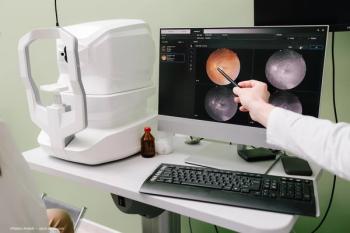
Part 1: Looking back at 50 years of innovation in ophthalmology
To mark Ophthalmology Times' 50th anniversary, we invited top experts to reflect on the most significant innovations in ophthalmology over the past five decades.
In celebration of Ophthalmology Times' 50th anniversary, we asked leading experts in the field what they see as the biggest innovation in ophthalmology in the past 5 decades.
Video Transcript:
Editor's note: The below transcript has been lightly edited for clarity.
Alfredo Sadun, MD, PhD:
First of all, congratulations to Ophthalmology Times. Fifty years is a nice landmark. If I were to say what has shocked me the most about things being done differently, in terms of ophthalmology, I would have to pick the OCT. The development of this machine is, I think, equivalent to Helmholtz first discovering the ophthalmoscope. It has allowed us to understand disease at a remarkable level. It's allowed the clinician to quickly diagnose. It's allowed for an outcome measure against purported new treatments that has just changed everything.
Katherine Talcott, MD:
I think really being able to image the retina just really changed the field, and specifically OCT. Because without OCT, we don't have that knowledge of what's going on with the retina; we can't manage how people like respond. The same with sort of the advent of intravitreal injections and treatment, but we really don't know the effect that that's having if we can't image. So amazing for us to be able to image this part of the body in a way that we hadn't before OCT.
Dilsher Dhoot, MD, FASRS:
The biggest has to be anti-VEGF agents. I mean, you know, prior to the advent of anti-VEGF, which you know, occurred around 2004, you know, we were very limited in how we treated this population. Since then, we've had numerous new agents come to market, and in fact, really has revolutionized the care of patients with neovascular AMD, DME, and CRVO, and also diabetic retinopathy. So really, that has been the biggest innovation in my mind, and has made retina really exciting.
Ellen Koo, MD:
So in the last 50 years, I'll be remiss to not mention phacoemulsification, as it has really revolutionized the way we treat and manage patients with cataracts, and with an aging population, this is a really significant achievement in ophthalmology. In the field of cornea, we've seen this rapid evolution of the treatment of the posterior cornea. We saw the evolution of PK to DSEK to DMEK, and now we are doing cell therapy to address the pathology of decreased endothelial function. So, I think we are looking at very exciting times.
Newsletter
Don’t miss out—get Ophthalmology Times updates on the latest clinical advancements and expert interviews, straight to your inbox.













































